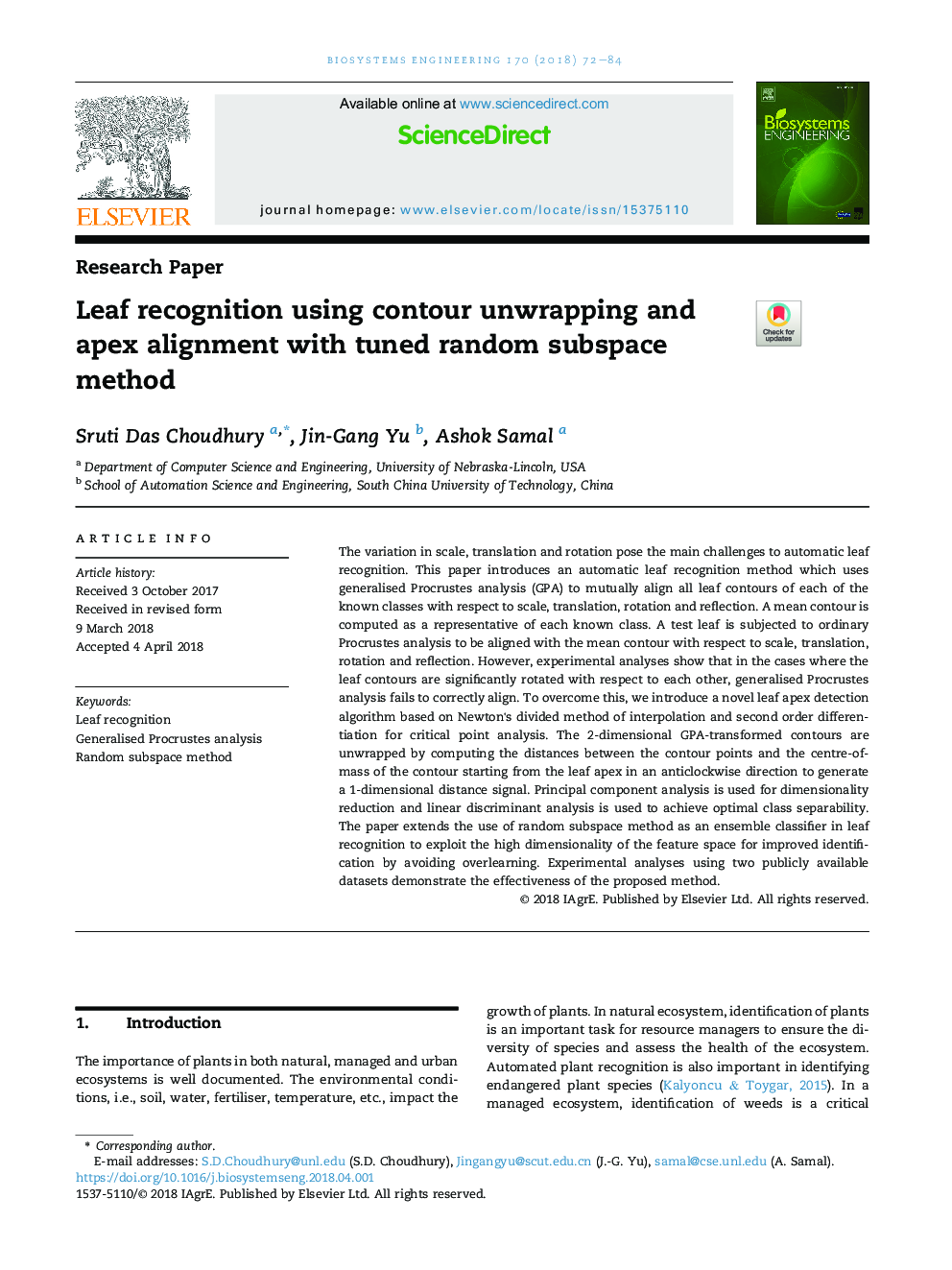| Article ID | Journal | Published Year | Pages | File Type |
|---|---|---|---|---|
| 8054708 | Biosystems Engineering | 2018 | 13 Pages |
Abstract
The variation in scale, translation and rotation pose the main challenges to automatic leaf recognition. This paper introduces an automatic leaf recognition method which uses generalised Procrustes analysis (GPA) to mutually align all leaf contours of each of the known classes with respect to scale, translation, rotation and reflection. A mean contour is computed as a representative of each known class. A test leaf is subjected to ordinary Procrustes analysis to be aligned with the mean contour with respect to scale, translation, rotation and reflection. However, experimental analyses show that in the cases where the leaf contours are significantly rotated with respect to each other, generalised Procrustes analysis fails to correctly align. To overcome this, we introduce a novel leaf apex detection algorithm based on Newton's divided method of interpolation and second order differentiation for critical point analysis. The 2-dimensional GPA-transformed contours are unwrapped by computing the distances between the contour points and the centre-of-mass of the contour starting from the leaf apex in an anticlockwise direction to generate a 1-dimensional distance signal. Principal component analysis is used for dimensionality reduction and linear discriminant analysis is used to achieve optimal class separability. The paper extends the use of random subspace method as an ensemble classifier in leaf recognition to exploit the high dimensionality of the feature space for improved identification by avoiding overlearning. Experimental analyses using two publicly available datasets demonstrate the effectiveness of the proposed method.
Related Topics
Physical Sciences and Engineering
Engineering
Control and Systems Engineering
Authors
Sruti Das Choudhury, Jin-Gang Yu, Ashok Samal,
